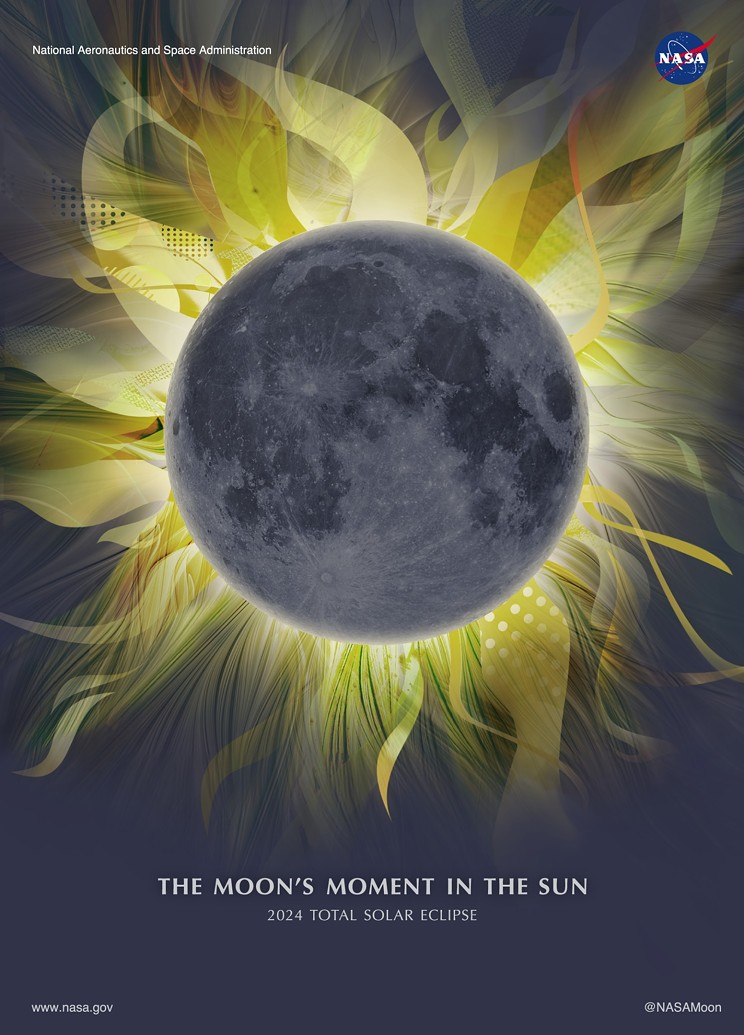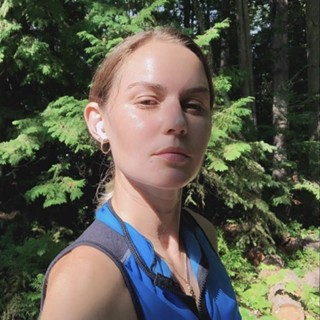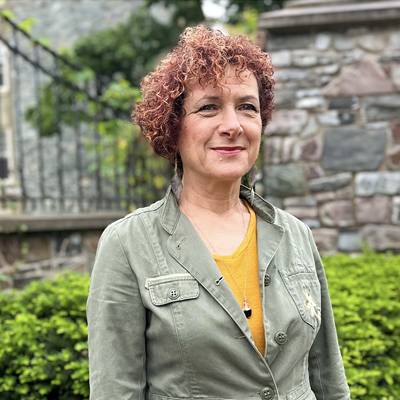On Tuesday, Apr. 2, Robert Thacker was doing his weekly "Science Files" call-in segment on City News' The Todd Veinotte Show, when a caller asked a practical question about bodies, celestial bodies. The caller wanted to know if they could use their phone's front camera, the selfie one, to safely watch the solar eclipse as it passes over Eastern Canada on Monday. Thacker is an experienced astronomer and professor of astrophysics at Saint Mary’s University. He’s also the director of outreach for the Burke-Gaffney Observatory at SMU.
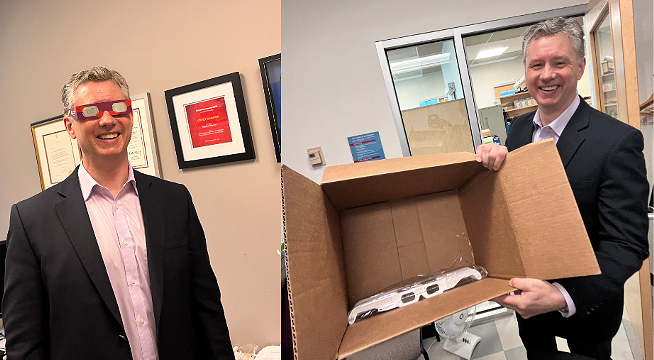
Thacker told the caller he was worried they might burn out their camera if they tried to use it to stare at the sun indirectly. Beyond that, could reflections off their phone hurt them? “I went and looked it up and, yes, you can actually blind yourself by using a phone. People have had eye damage reading their phones while sunbathing.”
If you do want to use your phone’s camera to capture this, Thacker says you’ll need a mylar filter overtop of it to protect it. Small mylar filters are used as the lenses of safe solar eclipse watching glasses, so if you have an extra pair you can cut out one eye lens and cover your camera with it to shoot the eclipse with.
The brightness of the sun is usually a natural deterrent from us staring directly into it and blinding ourselves. Yet, Monday offers a rare cosmic alignment of the sun, moon and earth that will plunge the once-lit sky into night-like darkness. As the moon’s shadow moves across the earth, it will draw a strip of total darkness, called the path of totality, which will be drawn up from Mexico, through Texas and up towards Central and Eastern Canada, passing over much of New Brunswick and a tiny sliver of Nova Scotia, including Meat Cove. Check the eclipse’s time and duration depending on where you are here.
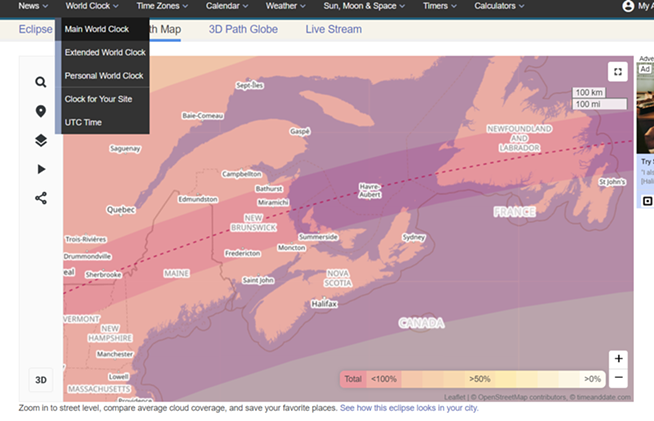
Burke-Gaffney Observatory Technician, Tiffany Fields, co-hosted Maritime Noon on Apr. 4 and talked about how to prepare to safely view this spectacular event, with tips listed on the observatory’s own website, on their eclipse page. Says the page, “solar eclipses do not make the sun more dangerous than a normal day, but there is increased temptation to look at the sun during a solar eclipse. However, it is not safe to look directly at the sun without proper eye protection, which would include using safe solar filters for binoculars or telescopes or eclipse safety glasses for our eyes. Regular sunglasses are NOT sufficient for observing the sun safely.”
Halifax is not in the path of totality, but is close enough to experience roughly 94.3% eclipse, meaning proper eye protection is a must the whole time here. The Department of Astronomy and Physics at SMU is hosting a free event on campus “for safe solar observing,” with some solar telescopes and 500 eclipse glasses available while supplies last beginning at 3:30 on Monday, Apr. 8.
If you’re unable to make it down to SMU or to pick up a pair of proper glasses, there are ways to safely watch the partial eclipse in Halifax with things around the house:
Thacker will be in Miramichi, New Brunswick–as will Fields–for a segment with CTV News about experiencing totality, as a compliment to his eclipse preview interview with CTV from Apr. 1.
Although Halifax will not experience full totality, there will still be much to see and observe: a darkening sky and a partial coverage of the sun–over 94%–as well as deep shadows passing over the Earth. Remember, the sun is still the sun even and can damage our eyes if stared at.
Thacker says, what’s called “first touch,” or the beginning of interaction between the moon and the sun, will happen around 3:30, when the event at SMU begins. “What I tend to suggest to people is to come out when it first touches, with your glasses, and see that–then come back 40 minutes later.”
If you are lucky enough to be in the path of totality, you’ll be able to shed your protective eyewear for that brief peak window of time–mere minutes–when the moon completely obscures the sun, a miraculous simpatico of celestial bodies: the sun, which is about 400 times larger than the moon, just so happens to be 400 times farther away from us than our moon. This is what makes a total eclipse possible roughly every 18 months on some section of Earth. Yet, the rarity of the eclipse in a place where people live or can easily travel to is very, very high.
To experience a total eclipse where you live is nearly a once-in-a-lifetime event, unless you become an eclipse-chaser. Monday’s eclipse will pass over an area where approximately 31 million people live.
For everyone on the path of totality, much will change. The temperature will drop nearly five degrees. The hairs on the back of your neck may stand up. Birds will change their song, thinking it’s dusk, or night. Plants may close, and the sun’s corona, or atmosphere, will appear as a halo around an absence of light.
The last time a total solar eclipse passed over Nova Scotia was in 1972, inspiring a Carly Simon lyric. (NASA has mapped the path of every total and annular solar eclipse visible in North America for the 19th, 20th and 21st three centuries here.) American cosmologist and author Carl Sagan came up for the trip in ‘72 and met with the founder of the department of astronomy at SMU, the Reverend Doctor Michael Walter Burke-Gaffney, whom the university’s observatory is named after. Born in Ireland in 1896, Burke-Gaffney became a Jesuit priest, astronomer and engineer.
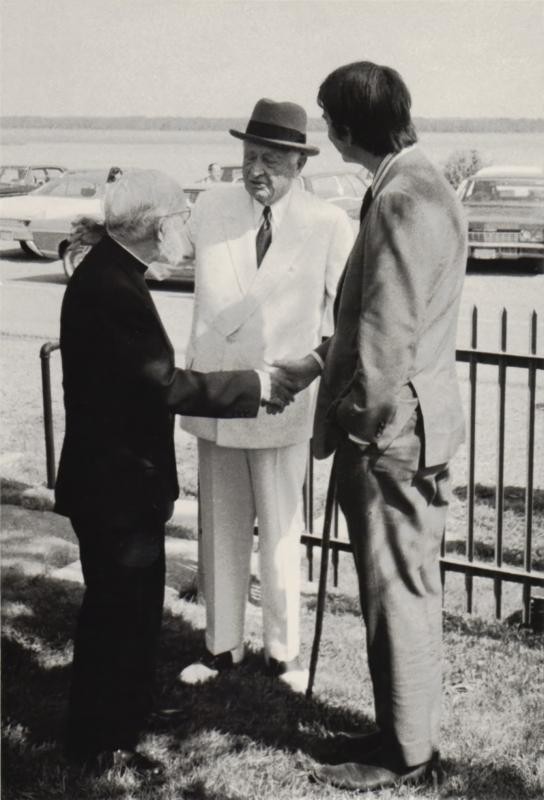
Says Thacker of Father Burke-Gaffney, “he was basically the first person in Nova Scotia to seriously talk about UFOs and the scientific method,” although the Shag Harbour incident was towards the end of his career when he had become more skeptical. “He evolved from initially being prepared to talk to anyone about anything to saying, ‘I've looked at so many things that I basically know that it’s not real.’” Meaning UFOs , although Thacker might say this further implores us to appreciate the utter uniqueness of Earth.
Thacker says Earth is the only planet in the solar system that gets the “truly unique experience” of a total solar eclipse– “to suddenly have night time in the middle of the day.”
In Nova Scotia, “this isn’t going to happen again until 2079.”
Even outside the path of totality, as Halifax is, “this chance alignment creates a unique series of shadows over the Earth every time it happens,” which is worthwhile to take notice of. Thacker says it’s well worth it to travel into the path of totality, if possible. Otherwise, there will be live broadcasts happening in English and French. Halifax’s own Discovery Centre has made educational videos about what to observe during the eclipse on their page here. NASA has their own eclipse page full of virtual tools to understand the eclipse here, and Canada’s Space Agency has handy eclipse information specific to Canada here.
Along with being an experienced astronomer, priest and engineer, Burke-Gaffney is said to have written poetry and collected flowers–sensorial observations of a different kind than purely scientific. For Thacker, watching the eclipse today is less about fresh scientific discoveries and more about the human experience. How does totality smell? Sound? Feel?
“While 100 years ago, eclipses were a real scientific opportunity, now not so much—although there are some things we can do…like mid-infrared measurements.”
Although he calls Einstein’s eclipse of 1919 “ the key one,” because it proved Einstein’s theory of relativity through observing the bending of light by gravity, although that’s not something we can observe with the naked eye.
Today, Thacker says the eclipse teaches us something more human than celestial.
“The more you know about the universe, the more that tells you who you are. Everyone feels unique, which is great. But when you start to realize you’re unique in this humongous system—you’re likely in a unique ecosystem on a unique planet, perhaps in a unique solar system—that describes the human experience in even greater detail.”
Does watching the moon block the sun kill the ego? Not according to Thacker. To him, the experience of cosmic coincidence like an eclipse can have one of two effects on us: “either people think, ‘I don’t care if we are the only civilization, I am who I am and I’m going to do my bit–or you get people, who are more like me, who think, ‘Oh, my god, my existence is truly, unimaginably unlikely and I need to make the best of it.”
Thacker has even attached a comic strip from the cartoon Calvin and Hobbes on his outreach website to illustrate this point.

“The sheer enormity of it—people say to me, ‘Do you have a special feeling because you can literally simulate universes?,’” Thacker is a computational astrophysicist who, yes, simulates universes. To the question, he says, “‘No’–it’s just physics at the end of the day…it’s no different from being able to figure out where an asteroid is going to be.’”
Speaking of which, there will be a devil’s comet, Comet 12P/Pons-Brooks, potentially visible near to Jupiter during the eclipse that amateur astronomer Dave Weixelman calculated the time and place of during totality on Monday.
Charting an asteroid or comet is hardly an everyday task for most people, but one humans have been doing successfully for hundreds of years. “Astronomy as a science is very, very old,” says Thacker. “If you go back far enough, there’s no clear distinction between astronomy and astrology.
“People were using astronomy to try and predict things, so, it’s no surprise the two got wrapped up together. Today, people still want to try and do that, although now we know a lot more about what makes things happen and what doesn’t.”
Does that mean celestial objects don’t affect as astrologers say they do?
“I know people want to get into that—I would worry about the things I can actually change first.”
Where to watch the partial–roughly 95%–eclipse in Halifax:
Saint Mary's University, Halifax, no registration required. 500 free pairs of eclipse glasses available. Click here for an image of the campus map to know where to enter the football field where the watch party is happening. 3:30-5:45 pm
Discovery Centre, Halifax, tickets are sold out for entry before 5pm, however members are still welcome to join in before then. The outdoor viewing will happen from 3:30-5:30pm with glasses provided and will be livestreamed indoors.
Make your own pinhole camera and watch from Citadel? Or wherever the sky is clear and the Western sky is in view.

